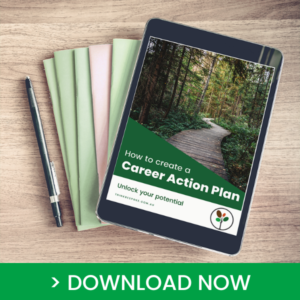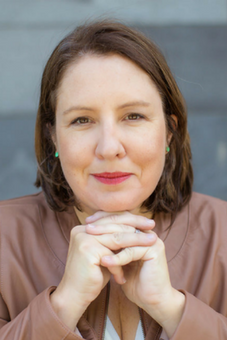In this article I explore 9 useful tools to help you reflect. My hope is that they provide thought starters for how you can very easily include more reflection in both your every day and formal planning.
Putting aside time to reflect on your performance, thoughts and feelings is a wonderful way to return home to yourself, acknowledge and name your emotions and work through the impact of life’s events. It can create a spaciousness in your body that helps you get to know the quieter and more thoughtful parts of yourself.
Navigating the transition from corporate life to motherhood and my entrepreneurial journey has been very eventful. What’s helped me embrace the changing seasons is the development and refinement of a series of reflection rituals throughout my week, month and quarter. These rituals have helped me build momentum, parent my children, manage my business, re-set when I hit overwhelm and cope during difficult times.
I’ve learnt to embrace the immense value of being versus doing.
I’ve learnt that less is not just more. It’s better.
9 Useful Tools to Help you Reflect
There are a number of ways you can include more reflection in your life. My favourite is the retreat. I book 1-3 nights away from my family for the purpose of writing and to help me restore my energy levels. As someone with ambivert tendencies I recharge by spending time alone, soaking in a hot bath, reading a good book or immersing myself in nature. In Discovering I am an Ambivert you can learn more about this trait.
I recommend a mix of formal and informal methods of reflection, including self reflection and seeking feedback others.
1. Ask Yourself How You Performed
Self reflection is a great way to assess your performance as soon as you’ve experienced a particular event, felt an unexpected emotion or revealed a version of yourself you’re not proud of. For a very long time I let righteousness and anger guide my default responses. These days I give myself more breathing space before I respond. I am a lot less reactive.
After a meeting with a client or colleague, or a teachable moment with my sons, I take some time to reflect on ‘what worked well’ and ‘what did not go well’. I may think about it as I walk the dog or prepare my lunch. I use what went well for the next conversation and change my approach for the areas where I can improve.
Rather than moving on to the next thing, I create a buffer between meetings and always like to take at least 30 minutes for a lunch break. Putting aside time in my day to reflect in this way provides insights into the ways I can improve and tweak my responses next time. It’s also an opportunity to pat myself on the back for a job well done. When you run your own business, you need to be your own cheer leader!
2. Ask Your Clients or Colleagues
Next time you meet with a client or colleague, at the end of the meeting ask them ‘How did you feel that went?’ or ‘How well has this met your expectations for the session?’. When they answer, use this as an opportunity to find out more and clarify what they mean. Don’t enter into a debate or philosophical discussion and share your opinion about what they said. Listen deeply and ask questions with the intent to really understand how they assess your performance.
While doing this may initially feel uncomfortable, the instant feedback is invaluable. Make sure you focus on the positive feedback, not just the one small suggestion for improvements!
I use this reflection tool to help me understand the value of what I do, the impact it has on my clients and the areas I can improve.
3. Embrace Journalling as Therapy
I attend an online journalling event most weeks with Ingrid Jones. This one hour structured journalling, called Diving for Pearls, is how I return home to myself.
Capturing my thoughts and feelings in a journal is how I process events in my life. It’s also how I’ve learnt to identify and name my feelings. It helps me work through issues, large and small, and reflect on how I want to show up in all areas of my life.
4. Slow Down and Embrace Being
For many years I operated at full throttle. It was not until the passing of my Mother in 2019 and the subsequent cumulative 262 days of lockdown during 2020 and 2021, that I learnt to slow down. I loved this quieter pace. During this time I explored a number of self care rituals offered via One Roof, including online guided meditation and structured journalling sessions. One Roof has since evolved into an all-in-one community-driven platform providing advice, guidance and an instant network of support for women in business. I continue to enjoy my membership and Co-host their Quarterly Book Club.
This is when I discovered meditation and engaged in the Voices of Program with Tali Brash. It’s hard to articulate the profound impact of this experience. The end result has been a return to my true voice, through guided meditation, Tali’s unique process and the therapy of writing on a regular basis. If a quiet voice inside you is interested in understanding more about this experience, you may enjoy listening to my interview with Tali on her podcast show, The Creative Zone.
Finding your True Voice with Karen Hollenbach
This experience is when I learnt to embrace the value of being.
What’s your pace like?
Do you spend much time with your thoughts?
Does the idea of slowing down excite you or scare you?
These are questions I encourage you to ask yourself, and perhaps reflect on them in your own journal. If you are a One Roof member, you’re very welcome to join us at one of Ingrid’s weekly journalling sessions.
5. Find an Accountability Partner
An accountability partner is someone who you may or may not work closely with. You can agree to meet up with each other on a regular basis, either online or in real life.
Sometimes it’s easier to achieve your goals when you say them out aloud and have committed to go on the journey with someone else. This is how I became more active. The main reason I go to my pilates class each Saturday is because I love this time with my niece!
I know many small business owners who regularly meet up with each other to help keep them on track with monthly goals they’ve set for their business. The silver lining of the dark experience with my Mother’s Dementia was the reconnection I made with my Sister. We now catch up on a regular basis and have deep, honest and raw conversations as we reflect on many aspects of our lives.
6. Embrace a Four Day Work Week
There’s growing research, and movements such as the 4 Day Week Global, who are interested in exploring and supporting the idea of the four day week as a part of the future of work. Swinburne University of Technology interviewed senior managers from 10 different Australian organisations who were trialling what is known as the 100:80:100 model. Australian companies that trialled four-day work week haven’t looked back, report finds, highlights these key points about this study:
- All of the companies have continued with a four-day week, with four companies adopting the change permanently and the other six extending the trial.
- Despite reduced working hours, 70 per cent experienced an increase in productivity while the other 30 per cent said productivity remained the same
I first moved to a four day work week so I could visit my Mother, who’s health was declining as a result of Dementia. The idea of cramming a full week’s work into four days initially felt overwhelming. I did not work a traditional work week across those five days, so the time I had in my business was already limited. I managed to make it happen by focusing on the business and marketing activities that delivered the greatest results. I mapped my weekly availability and set up scheduling tools via Hubspot for clients to book intro chats or virtual consults.
Each Thursday or Friday I would use the one hour drive each way to call clients or check in on family and friends. Sometimes I would use the travel time to sing at the top of my voice to my favourite songs. On my return drive after many visits I’d have a good cry about how heartbreaking it was to witness the slow death of a previously vital and present human and friend, my Mother.
Meanwhile, my business continued to flourish.
This was such an interesting lesson for me. I continue to mostly work four days a week, dedicating my Fridays to journalling, yoga, lunch with friends, a monthly massage or whatever I feel like doing. Occasionally I’ll attend a conference on my day off or take a client out for brunch or lunch. The change in pace and investment in self care helps me be more productive over the four days I dedicate to Think Bespoke.
7. Explore Digital Minimalism
Technology has many benefits when you become more intentional about how to leverage it as a tool to help you live a deeper life. Since embracing Digital Minimalism [please read Cal Newport’s book, Digital Minimalism, to learn more about this concept] I’ve developed operating procedures for when I spend time online. I’ve slowly walked away from a number of social media platforms or stopped using them altogether. I’ve also invested in an Apple Watch to track my physical activity, which has been very helpful. Setting boundaries for screen time helps me maximise my time online and focus more on the activities I enjoy in real life, away from a screen.
For the platforms I do use, the built-in analytics provide helpful feedback. For example, the Hubspot CRM helps me track new client enquiries, website and email marketing performance and LinkedIn offers profile analytics about my new followers, who’s viewed my profile and post views and engagement levels.
8. Schedule Regular Short Breaks & Getaways
Scheduling regular short breaks and getaways gives you something to look forward to when you’re in the thick of projects and busyness. If your life moves at a fairly demanding pace, you need to consciously carve out time to map out when you’ll take a break. I recommend every 3-6 months. When I worked in a full time role with four direct reports, I would schedule regular annual leave alongside public holidays to extend a long weekend into a week’s holiday.
My parents taught me the concept of ‘going on holidays’. We did not have a lot of money, but we did have extended family scattered across country Victoria and NSW, who welcomed our annual visits. Some of my fondest childhood memories are milking the cows at the Splatt’s dairy farm in Gunbower and watching the shearers in action at the Karsten’s in Weethalle.
I have continued the holiday tradition with my own family by enjoying regular camping trips and weekend’s away with other families. A change of scenery and time away from ‘the old routine’ gives me a healthy perspective about issues playing on my mind. They may be work related or parenting related. Many problems have been solved around a camp fire, with friends. Deep conversations as we enjoy the sound of nature.
Perhaps now is a good time to check when the next public holiday is, block out time in your diary and plan a short break or getaway.
9. Develop a Career Action Plan
The decision to establish Think Bespoke in 2010 was based on my desire to participate in all areas of my life. I love working, but I could not resolve how I was going to hold down a full time job and meaningfully engage with my children. Re-training at Monash University to obtain my Graduate Diploma in Education changed the direction of my career. This ultimately led to the establishment of Think Bespoke. The framework I used to develop this plan are detailed in my e-Book, How to Create a Career Action Plan.



